
Myrrhis odorata, with common names cicely, sweet cicely, myrrh, garden myrrh, and sweet chervil, is a herbaceous perennial plant belonging to the celery family Apiaceae. It is the only species in the genus Myrrhis.

Cedrela odorata, commonly known as Spanish cedar, Cuban cedar, or cedro in Spanish, is a commercially important species of tree in the chinaberry family, Meliaceae native to the Neotropics.
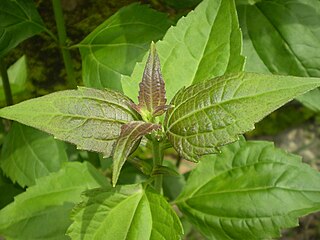
Chromolaena odorata is a tropical and subtropical species of flowering shrub in the family Asteraceae. It is native to the Americas, from Florida and Texas in the United States south through Mexico and the Caribbean to South America. It has been introduced to tropical Asia, West Africa, and parts of Australia.
Christmas bush may refer to:

Chromolaena is a genus of about 165 species of perennials and shrubs in the family Asteraceae. The name is derived from the Greek words χρῶμα (khrôma), meaning "color", and χλαῑνα (khlaīna) or λαῑνα (laīna) meaning "cloak". It refers to the colored phyllaries of some species. Members of the genus are native to the Americas, from the southern United States to South America. One species, Chromolaena odorata, has been introduced to many parts of the world where it is considered a weed.
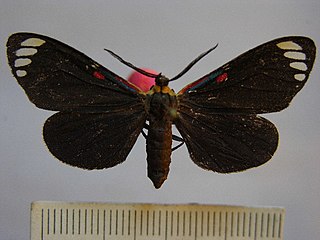
Phaloesia is a monotypic of tiger moth genus in the family Erebidae. Its only species is Phaloesia saucia, the saucy beauty moth. The genus and species were first described by Francis Walker in 1854. It is found from the lower Rio Grande Valley of Texas in the United States to Venezuela.
Odoratus is a Latin adjective meaning "fragrant, perfumed", and may refer to:
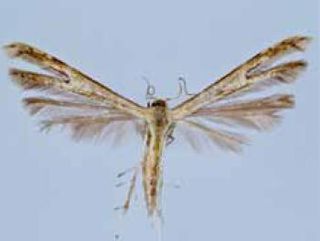
Adaina is a genus of moths in the family Pterophoridae. The genus was erected in 1905 by J. W. Tutt. Several of its species have gall-inducing larvae, such as Adaina primulacea, of which the larvae induce stem galls on Chromolaena odorata, and Adaina microdactyla, which induces stem galls on Eupatorium cannabinum.
Carmenta chromolaenae is a moth of the family Sesiidae. It is native to Venezuela, but was introduced to South Africa for the biological control of Siam weed.
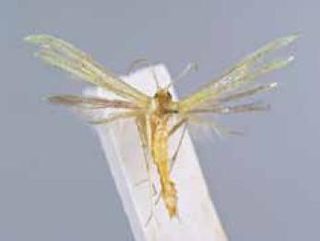
Adaina primulacea is a moth of the family Pterophoridae. It is known from Taboga Island in the Gulf of Panama, Costa Rica and southern Florida, United States. It is probably widespread throughout the Neotropics, including the West Indies and Central and South America.

Calephelis perditalis, also known as the rounded metalmark or lost metalmark, is a species of butterfly in the family Riodinidae. It is found in Texas in the United States and Mexico, south to Venezuela. The species was first described by William Barnes and James Halliday McDunnough in 1918.

Mikania natalensis, the Natal mikania, is a plant in the family Asteraceae, and is native to Africa.

Actinote thalia is a butterfly of the family Nymphalidae. It was described by Carl Linnaeus in the 1758 10th edition of Systema Naturae. It is found in most of South America. An attempt was made by the South African programme to defoliate the Chromolaena odorata, a shrub of Neotropical origin, by this species, but was disqualified due to an unacceptably wide host range.

Pareuchaetes pseudoinsulata is a moth of the subfamily Arctiinae native to Venezuela and Trinidad and Tobago. It is an introduced species in Sri Lanka, as well as in Malaysia, Indonesia, the Philippines and Guam.

Pareuchaetes insulata, also known as the yellow-winged pareuchaetes, is a moth of the subfamily Arctiinae. It was described by Francis Walker in 1855. It is found on Cuba and the Antilles, as well as in the southern United States, the Dominican Republic, El Salvador, Guatemala and Nicaragua.
Cecidochares connexa is a species of tephritid or fruit flies in the genus Cecidochares of the family Tephritidae. It is used for biocontrol of invasive shrub Chromolaena odorata.
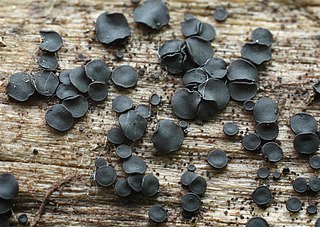
Patellaria is a genus of fungi in the family Patellariaceae. The genus was circumscribed in 1822 by mycologist Elias Magnus Fries with Patellaria atrata assigned as the type species.
Mpem and Djim National Park is a protected area in Cameroon. The park was designated by the government of Cameroon in 2004, and covers an area of 974.8 km2.

Actinote anteas is a species of butterfly of the genus Actinote. The species is largely observed in Central America and Colombia. The species has also been brought into Indonesia.













